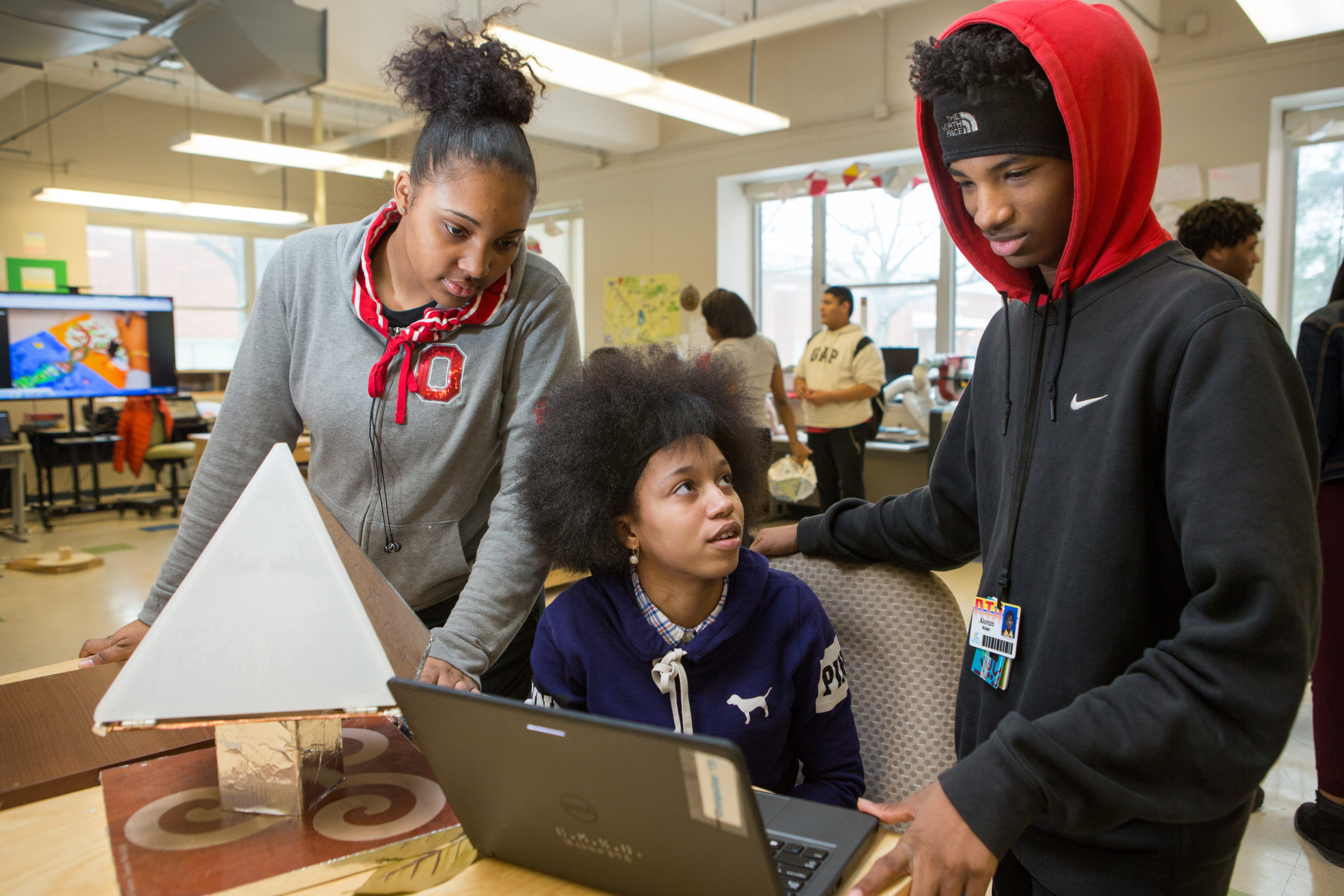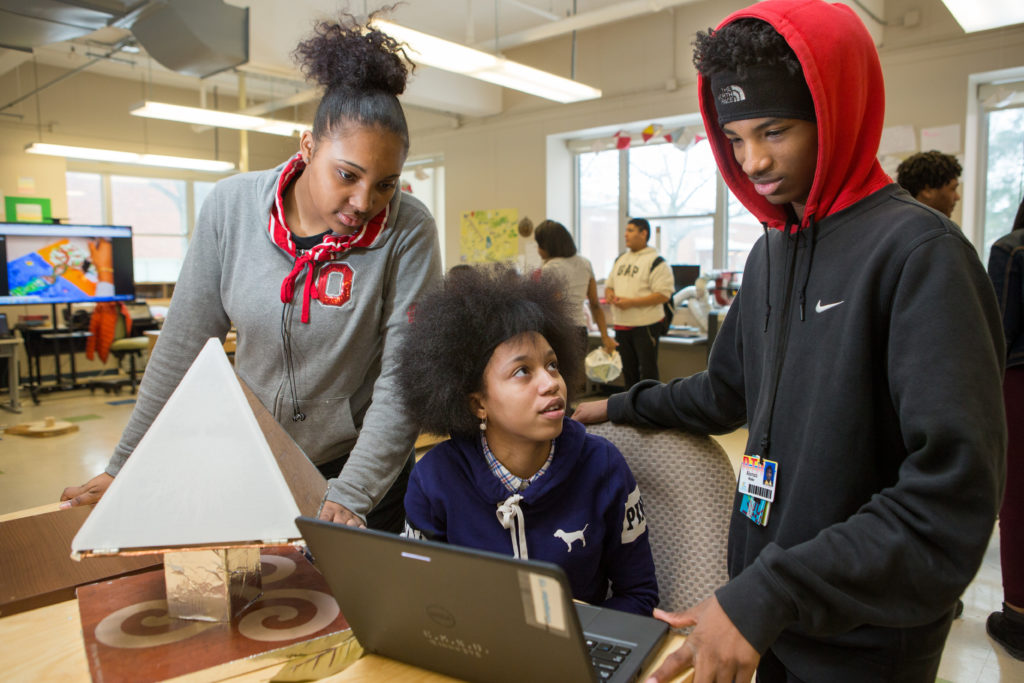by Merijke Coenraad

Tenth graders collaborate on an engineering project. Photo by Allison Shelley/The Verbatim Agency for EDUimages
Artificial Intelligence and Learning. The most common technologies used within projects were (a) Intelligent tutoring systems, (b) machine learning, (c) speech, vision, and natural interactions, and (d) social robotics and avatars. While these were the most common technologies, many projects used a mashup of technologies and focused on how the technology could be used in new ways within the classroom to support learning. If you want to read more about the types of AI, we recommend the AI4K12 project and this poster thinking about 5 big ideas in AI as a starting point.
Need an example of what this looks like? Check out the Inq-Blotter project. It provides teachers with real-time tools that alert them to students’ science needs as they are learning. Students use the Inq-ITS platform that provides them inquiry science learning experiences through labs and simulations. In addition to providing the experiences, Inq-ITS is an intelligent tutoring system and is able to assess students in real-time. Inq-Blotter builds on these capabilities to send teachers messages relating to how students are doing so they are able to provide just-in-time support. Inq-Blotter provides teachers with the opportunity to gather formative assessment data and support quality inquiry learning. This ambitious project took multiple years of research and mashed up data science, assessment, science learning, and intelligent tutoring tools.
If you are interested in intelligent tutors that help you understand what your students know, you can also check out our post on ASSISTments, an intelligent tutor for math learning. You can also see our webinar that discusses both ASSISTments and Inq-ITS.
So, what does this mean for your classroom? Think about:
What technologies might lie ahead and how do you want to use them? What would an intelligent tutoring system or social robot look like in your classroom?
Are you interested in using an intelligent tutor like Inq-ITS or ASSISTments in your classroom now? What are the implications of using these technologies for your teaching and practices within the classroom?
How could these emerging technologies affect your classroom practices and pedagogy? How will you continue to promote equitable learning opportunities when using them?
Out-of-school-time Learning. While we discussed technology in a formal setting during the school day, Some of the projects also investigated learning with educational technology in out-of-school environments.
Mash-it! Let’s look at a project that ambitiously mashes using AI in out-of-school learning!
The Virtual STEM Buddies for Personalized Learning Experiences in Free Choice Informal Learning Settings project brings together museum learning with intelligent agent buddies to support students’ STEM learning at a children’s museum. The computerized character interacts with the child as they move through the museum and acts as both a meteor and a peer. The AI agent, aka the buddy, is able to give instructions based on teachable moments and help children to find exhibits that aren’t crowded. AI in this out-of-school setting can provide youth with plenty of opportunities to learn and make the most of their museum experience. This ambitious project brought together team members from multiple universities and the Children’s Museum of Atlanta to mash up intelligent tutors, STEM, and informal learning.
What do you think of the possibilities with AI? Tweet us @EducatorCIRCLS and tell us about your innovative technology use and stay tuned for future blogs in this series about CIRCL Ambitious Mashups.
Educator CIRCLS posts are licensed under a Creative Commons Attribution 4.0 International License. If you use content from this site, please cite the post and consider adding: “Used under a Creative Commons Attribution 4.0 International License (http://creativecommons.org/licenses/by/4.0/).”
Suggested citation format: [Authors] ([Year]). [Title]. Educator CIRCLS Blog. Retrieved from [URL]

